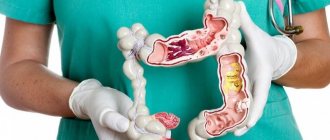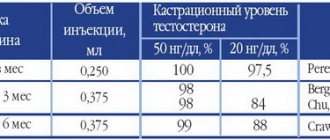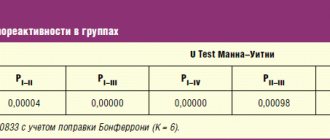Inositol helps the body in the fight against various problems: from neurological to aesthetic. Taking this substance, previously considered a vitamin, has practically no contraindications.. Who should take it and why? What to combine with? In what doses? This is discussed in the article.
Inositol (in the literature you can also find the term “inositol”) is a biologically active substance that is part of cell membranes. It was previously called vitamin B8, since in its structure and properties inositol is close to B vitamins. Moreover, most of this essential substance is produced in some tissues of the body from glucose, therefore, it is currently customary to classify inositol not as a vitamin, but as a minor and biologically active substances with established physiological effects.
The production and absorption of inositol are disrupted by poor nutrition, exposure to negative chemical and environmental factors, smoking, consumption of alcoholic and caffeine-containing drinks, certain medications, as well as certain diseases (for example, PCOS). Inositol consumption increases with intense mental and physical stress.
Chemical composition and pharmacokinetic features
In terms of its chemical structure, inositol is a hexahydric cyclohexane alcohol. There are nine isomers (molecular varieties) of inositol - they differ somewhat in molecular structure, but at the same time they are similar in composition and in general in their properties:
- myo-inositol;
- cis-inositol;
- muco-inositol;
- neo-inositol;
- epi-inositol;
- allo-inositol;
- scyllo-inositol;
- D-chiro-inositol;
- L-chiro-inositol.
Accordingly, to the question of what is the difference between inositols, the answer is simple: some nuances of the spatial structure of the molecule. It is believed that myo-inositol has high biological activity, is absorbed faster and begins to act. Another well-studied biologically active isomer of inositol is D-chiro-inositol. And the biological role of the remaining 7 isomers is practically unknown.
Part of the inositol (up to 75%) is produced in the kidney tissues from the glucose present. If inositol enters the body from the outside (from food or in the form of supplements), it is absorbed in the stomach. Inositol is a water-soluble substance; its molecules dissolve in the blood plasma and, together with it, are distributed throughout the tissues of the body. Inositol actively accumulates in some tissues. The highest concentrations are determined in the brain (10-15 times higher than in circulating blood), in the eyeball (lens, back wall of the eye), and tear fluid. The concentration of Myo-inositol in sperm and oocyte is 3 times higher than in circulating blood. Myo-inositol actively accumulates in the tissues of the embryo (the concentration in the fetal blood plasma in the middle of the gestational period is 5 times higher than in the mother). Excess inositol is excreted along with urine through the kidneys.
Where can I buy
If you are in good health and have no objective or subjective complaints, an optimal and reasonable diet combined with appropriate physical activity is sufficient to maintain a healthy tone. In other cases, it may be necessary to additionally use drugs with inositol. It is convenient to purchase such supplements through online stores in Moscow - it is often cheaper in price than pharmacies and it is much easier to choose, since you can familiarize yourself with descriptions or reviews of real customers in a comfortable environment.
dietary supplements with inositol in Moscow on our website TrainerIzDoma.rf. The catalog offers dietary supplements from trusted brands Solgar, Now, Biovea, Twinlab. Detailed descriptions, characteristics for each product, compositions and dosages will help you choose the product you need. We recommend consulting with your doctor.
Role in the life of the body
In the human body, inositol:
- protects cell membranes from damage and destruction, strengthens them;
- normalizes fat metabolism, stimulates the production of phospholipids in the liver and the breakdown of fat cells in subcutaneous and visceral (located around internal organs) fat depots;
- indirectly takes part in the functioning of insulin;
- prevents the formation of atherosclerotic plaques inside blood vessels;
- reduces blood cholesterol levels;
- helps normalize blood pressure;
- promotes the restoration of damaged nerve cells, has an antidepressant and anxiolytic effect (participates in the production of dopamine and serotonin);
- promotes the body’s adaptation to changed external conditions;
- has an inhibitory effect on the growth of tumor cells;
- stabilizes hormonal levels in women, in combination with folic acid stimulates ovulation, helps restore the menstrual cycle, and improves the quality of eggs.
Pharmacological action[edit | edit code]
When administered intravenously to a person in a dose of 1-2 g, inositol has no visible effect on physiological functions. The physiological role of inositol is somewhat similar to that of choline. As part of phosphatidylinositol, inositol is part of the phospholipids of cell membranes and plasma lipoproteins. Under the influence of many hormones, paracrine factors and mediators, membrane phospholipids release polyphosphorylated inositol derivatives. One of these derivatives, IP3, acts as a second messenger, stimulating the release of Ca2+ from intracellular stores.
Indications for the use of inositol
Inositol has a wide range of positive effects on the body - it is not surprising that it has found application in complex programs for the treatment and prevention of a wide variety of diseases. At the same time, I would like to emphasize: inositol does not replace medications necessary for the treatment of certain diseases, but complements them, making such treatment more effective. In some cases, supplementing the treatment regimen with inositol can reduce the duration of the course of drug therapy and the dosage of drugs.
The use of inositol in neurology and psychiatry
The ability of inositol to stimulate the restoration of nervous tissue, its mild anxiolytic and antidepressant effect allow it to be widely used in the complex treatment of neurological disorders. Among them:
- bipolar disorder;
- depression;
- suicidal tendencies;
- various eating disorders;
- sleep disorders;
- panic attacks, anxiety;
- neurotic manifestations of PMS (stimulates the production of serotonin).
In addition, it has worked well during periods of increased intellectual stress (exams for schoolchildren and students, completion of projects at work, etc.). Inositol increases the stability of nerve cells, promotes the activation of thought processes, and improves cognitive function.
Inositol has demonstrated high effectiveness in correcting brain damage associated with liver dysfunction - hepatic encephalopathy, as well as sodium deficiency in the blood. Research has confirmed that inositol may be effective in restoring the nervous system after viral infections.
An important property of inositol is the reduction of side effects from taking lithium, which is widely used in the treatment of a number of psychotic conditions, including bipolar disorder.
To achieve a pronounced effect, it is recommended to use inositol in a course to allow the substance to accumulate in the tissues in the required quantity. Single episodes of supplementation are ineffective. For some diseases, the doctor may recommend a long course of taking inositol to ensure a lasting effect. In addition, there is a list of pathologies of the nervous system for which taking inositol is ineffective. Such diseases include:
- schizophrenia,
- autism,
- ADHD (attention deficit hyperactivity disorder),
- acute traumatic injuries of the brain and spinal cord,
- tumors of the brain and spinal cord.
The effectiveness of inositol in treating Alzheimer's disease is questionable, but research in this area continues.
The use of inositol in cardiology
The properties of inositol make it an effective addition to treatment and prevention regimens for a number of heart and vascular diseases. Inositol in cardiology promotes:
- regulation of lipid metabolism and cholesterol levels in the blood;
- normalization of blood pressure;
- strengthening vascular walls, preventing the formation of atherosclerotic plaques;
- reducing the intensity of thrombosis.
It is important to remember that taking inositol is not a substitute for antihypertensive treatment, taking drugs to prevent thrombosis or lower cholesterol levels in the blood. But vitamin B8, when taken in a course, helps to increase the effectiveness of such treatment, and therefore serves as a good addition to standard complex therapy.
Inositol is especially effective for the treatment and prevention of diseases of the cardiovascular system in people with excess body weight and metabolic syndrome.
The use of inositol in endocrinology
Myo-inositol is becoming an important component in the complex treatment of diabetes mellitus and insulin resistance, especially in overweight patients. Inositol increases the sensitivity of peripheral tissues to insulin, and in cases of already developed diabetes, it reduces the likelihood of complications and improves the patient’s condition as a whole. Experiments on animals revealed that inositol stimulates the utilization of glucose in muscle tissue and helps increase the number of tissue receptors for insulin.
In addition, a number of clinical studies have confirmed the effectiveness of taking inositol for the prevention of gestational diabetes, especially in pregnant women with excess body weight and insulin resistance that was present before pregnancy. In addition, animal experiments have confirmed that inositol protects the fetus from damage associated with gestational diabetes.
The use of inositol for metabolic syndrome and excess body weight
Inositol has a pronounced regulatory effect on lipid metabolism and, therefore, is widely used for the correction and prevention of metabolic syndrome, especially in women. Inositol promotes:
- relief of insulin resistance;
- reducing blood glucose levels;
- reducing total cholesterol levels;
- increasing the level of high-density lipoproteins (the so-called “good”, “useful” cholesterol, which is necessary for the production of hormones).
Inositol stimulates an increase in leptin levels, which helps reduce appetite and has a beneficial effect on energy metabolism in general. B8 inositol also increases the level of adiponectin, a hormone that stimulates the breakdown of fats.
According to research, the use of Myo-inositol in women during menopause can be an effective means for correcting insulin resistance and metabolic syndrome.
The use of inositol in gynecology
Inositol is considered one of the substances effective for normalizing the functioning of the female reproductive system. It is widely used for:
- complex therapy of polycystic ovary syndrome (PCOS) and its consequences (infertility, excess body weight, insulin resistance, hormonal imbalance);
- increasing fertility in case of ovulation disorders of various origins;
- stimulation of estrogen production;
- stimulation of ovulation (in combination with folic acid).
Supplements that combine myo-inositol, D-chiro-inositol and folic acid are sometimes used to treat PCOS.
The use of inositol in andrology
Inositol can be called a “reproduction vitamin”, as it can effectively increase fertility in women and men. Vitamin B8 can be used as an addition to complex treatment for men with:
- violation of spermatogenesis;
- unsatisfactory sperm quality;
- hormonal imbalance in men;
- inflammatory diseases of the male reproductive system;
Inositol, especially in combination with folic acid, has a regulating effect on the balance of hormones in the male body, reduces FSH and LH levels, while gently increasing testosterone levels. Accordingly, inositol can be recommended both when planning pregnancy and preparing for natural conception, and in preparation programs for IVF, especially when the quality of a man’s sperm is low.
Inositol in combination with folic acid is used to correct erectile dysfunction in men with diabetes.
The use of inositol in preparation for and during pregnancy
Inositol increases the fertility of both women and men, especially in the presence of disorders of ovulation and spermatogenesis, for which a course of taking it in combination with folic acid is recommended when preparing partners for conception. Inositol helps normalize the menstrual cycle and stimulates ovulation.
Equally important is the sufficient intake of inositol into the body of the expectant mother - during the growth and formation of the fetus, it normalizes metabolism and promotes the proper development of the nervous system. Therefore, throughout pregnancy, expectant mothers are recommended to eat an inositol-rich diet, and, if appropriately recommended by a gynecologist or endocrinologist and under strict medical supervision, take inositol-containing supplements for pregnant women.
The use of inositol in aesthetic medicine
Vitamin B8 is rightly considered one of the “beauty vitamins” due to its effects - stabilizing cell membranes and normalizing fat metabolism. In cosmetology, inositol can be used both in the form of additives in addition to other medicinal products, and topically, as part of creams and masks. Vitamin B8 is an effective component of complex therapy:
- acne,
- alopecia,
- brittleness, dry hair,
- disorders of the fat balance of the scalp,
- age-related changes in the skin - loss of elasticity, firmness.
It is believed that the effect of topical application of inositol occurs faster, but taking the drug in the form of supplements allows you to accumulate a sufficient amount of the substance in the body and prolong its effect.
Inositol is especially effective if problems with skin and hair are caused by a violation of the metabolism of sex hormones in women - with “hormonal” acne, excess hair growth with ovarian hypofunction, etc.
Other uses of inositol
As an antioxidant and stabilizer of cell membranes, inositol can protect cells from damage by carcinogenic factors - in particular, tobacco smoke, nicotine, and some toxins. Inositol also suppresses pathological cell division. These properties can be regarded as the anti-cancer effect of inositol, although you should not rely solely on nutritional supplements while continuing to expose yourself to carcinogens.
The experiment confirmed the anti-inflammatory effect of inositol - it inhibited the production of cytokines and gently normalized, without suppressing, the immune response.
Myo-inositol has an antioxidant effect and simultaneously stimulates the increase of another antioxidant - glutathione, potentiating its effect.
Inositol is necessary for the normal development of the child's body - infants receive it from mother's milk, and when bottle-fed - from mixtures that are enriched with this substance. It is especially important for premature babies to get enough inositol.
Beneficial features
- Understanding inositol that it is necessary to understand what beneficial properties it has. First of all, the substance’s usefulness for women’s health is noted. When taking the drug, it is possible to normalize hormonal levels and relieve severe symptoms of various endocrine disorders. It enhances the activity of the ovaries, improves the functional state of eggs, and promotes the establishment of the menstrual cycle.
- The drug helps balance the composition of chemicals in the brain, in particular serotonin and dopamine. With enough of it, it is possible to maintain a positive attitude and increase resistance to stress, which has a positive effect on mental health in general. Inositol also helps cope with panic disorders.
- Other properties of inositol:
- Reducing levels of triglycerides and “bad” cholesterol. This reduces the likelihood of developing many chronic diseases: obesity, cardiovascular pathologies, diabetes, hypertension.
- Preventing hair loss. The substance strengthens hair follicles and accelerates hair growth, relieves unpleasant symptoms such as flaking and itching of the scalp.
Food Sources of Inositol
Inositol and its isomers can be obtained by eating the following foods:
- meat, fish, seafood (the most inositol is in beef, white chicken, pork, tuna, crabs and some shellfish);
- fresh fruits (especially melons, citrus fruits, cherries, peaches), as well as prunes;
- fresh vegetables (the most inositol is in artichokes, okra, cabbage, spinach, green beans, pumpkin has a lot of D-chiro-inositol);
- dairy products;
- whole grain cereals and bread (buckwheat is one of the richest sources of D-chiro-inositol).
The inositol content is higher in fresh vegetables and fruits than in those that have been heat-treated, dried or canned.
In addition, one form of inositol, phosphatidylinositol, is a component of lecithin - and, accordingly, is present in all products containing lecithin (egg yolk, soybeans, corn, sunflower seeds, fatty fish).
Need[edit | edit code]
The need for the presence of inositol in human food remains unproven, probably because it is produced by intestinal bacteria, persists in tissues for a long time after absorption, and can be synthesized de novo in some organs. However, this substance is found in high concentrations in human milk. It is possible that, like choline, it should be added to infant formulas to bring their composition closer to the composition of human milk (Committee on Nutrition, The American Academy of Pediatrics, 1993).
Recommended Dosages of Inositol
In most cases, inositol isomer supplements are prescribed in the following doses:
- in the treatment of neurological and mental disorders - myo-inositol 12-18 g/day, course duration - at least 4-6 weeks;
- for the treatment of PCOS - a combination of myo-inositol and D-chiro-inositol in a ratio of 40:1 is recommended, that is, 2–4 g of myo-inositol + 0.05–0.1 g of D-chiro-inositol daily before breakfast for 6 -12 months;
- for the correction of metabolic syndrome and for weight loss - myo-inositol 4 g/day (divided into 2 doses), course duration - 12 months; to normalize blood sugar and correct insulin resistance in type II diabetes mellitus - 2-4 g of myo-inositol + 200-400 mcg of folic acid per day, course duration - 6-12 months;
- for the prevention and correction of gestational diabetes - 2 g of myo-inositol + 400 mcg of folic acid per day throughout pregnancy;
- in preparation for pregnancy and IVF - 2-4 g of myo-inositol + 400 mcg of folic acid per day, course duration - 3 months.
The dosages indicated are approximate; it is recommended to consult a specialist before starting to take the supplement. Taking inositol during pregnancy should be under the supervision of a physician.
Release forms
Inositol is available in powder and capsules. Each of these forms has its own advantages and disadvantages. The powder dissolves in water, making it convenient for those who have difficulty swallowing and small children to drink. The powder is used in cosmetics. The disadvantage of this form is the low degree of absorption in the body.
Capsules have the ability to be better absorbed. Compared to powders, only a third is required to obtain the same dosage of inositol. Due to its higher efficiency, the price of a course of capsules is more favorable. The disadvantage of this form is that it is difficult to swallow.
Features of the use of inositol
Inositol can be taken in combination with other biologically active substances. So, when taken simultaneously with:
- folic acid - there is a mutual enhancement of all the effects of both components;
- thioctic acid, carotenoids, Q10 and Omega-3 - the effect of inositol will increase;
- melatonin - the effectiveness of infertility treatment will increase (used in preparation for IVF);
- lithium - the severity of the side effects of lithium decreases;
- phytic acid - the antitumor activity of the supplements will mutually increase;
- choline and tocopherol - the digestibility of the latter will increase, the antioxidant effects will mutually enhance;
- oral contraceptives - the effectiveness of the PCOS treatment regimen will increase.
Due to the fact that vitamin B8 is a natural component of body tissues, contraindications to its use are limited to individual intolerance to synthetic inositol, which occurs very rarely. Taking inositol supplements during pregnancy should be done under the supervision of a physician.
An overdose of inositol occurs extremely rarely with systemic excess consumption of supplements with it. Occasional overdose is usually safe - excess inositol is excreted from the body by the kidneys. An overdose may result in indigestion and allergic reactions.
Contraindications
The following conditions are contraindications for taking inositol:
- individual intolerance to the components included in the dietary supplement with vitamin;
- period of gestation - B8 can cause uterine contractions that can provoke premature birth;
- bipolar affective disorder, better known as manic-depressive psychosis;
- the period of breastfeeding a baby - an increase in progesterone can block lactation.
There are no other contraindications indicated in the instructions for the vitamin.
Admission rules
Vitamin B8 powders or capsules are taken with meals. The dosage of inositol is determined by the attending physician; it differs for different pathologies. There are also age-related needs:
- children under 6 years old – 100 milligrams;
- up to 18 years – from 200 to 500 milligrams;
- adults – 500 milligrams and above.
In the treatment of diseases associated with nervous system disorders, high doses are used - from 14 to 18 grams per day. How much and how to take inositol is determined by the attending physician individually, focusing on the patient’s diagnosis.
For women in the treatment of PCOS, a dose of 200 milligrams to 4 grams is used. The vitamin is taken once a day in the morning, before the first meal.
In the field of cosmetology, inositol is used in creams, masks, and shampoos. The drug can be added to factory masks, bought ready-made products with B8, or made independently. 3% of the substance is added to the composition. We present several popular recipes.
| Compound | Mode of application | Exposition |
| Essential oils of cedar, rosemary, geranium, vitamin B8. | Heat the oils, add B8, mix, apply to the roots of the hair, distribute along the length. | A few hours, you can leave it overnight. |
| Egg yolk, kefir, aloe juice, inositol. | Mix, apply to roots, massage into skin. | 40 minutes once a week. |
If you know of other recipes, please share your information.
The shelf life of additives is indicated by each manufacturer on the packaging and is three years from the date of production. The drug must be stored in places that small children cannot reach in order to avoid cases of uncontrolled use. Storage temperature is room temperature.






